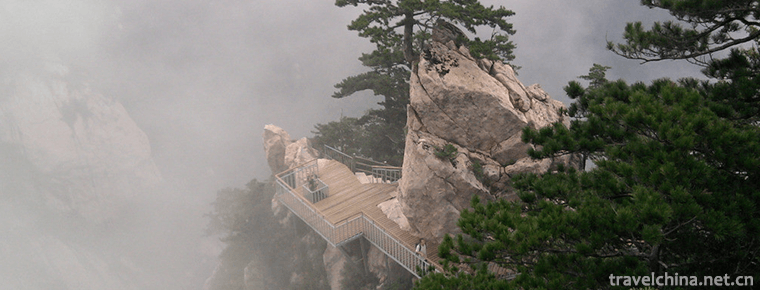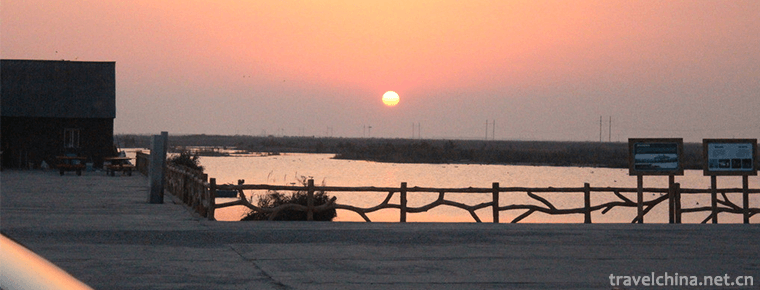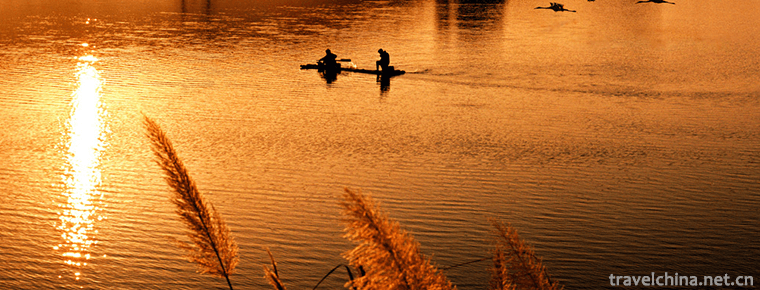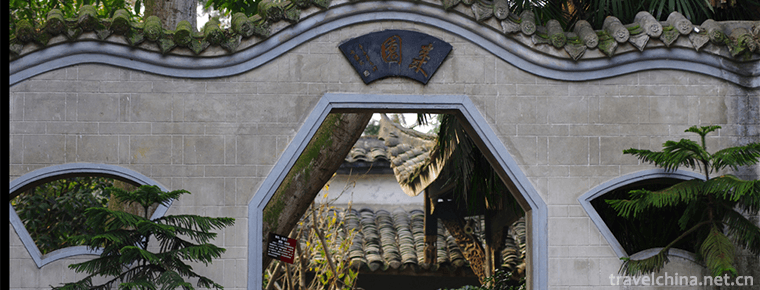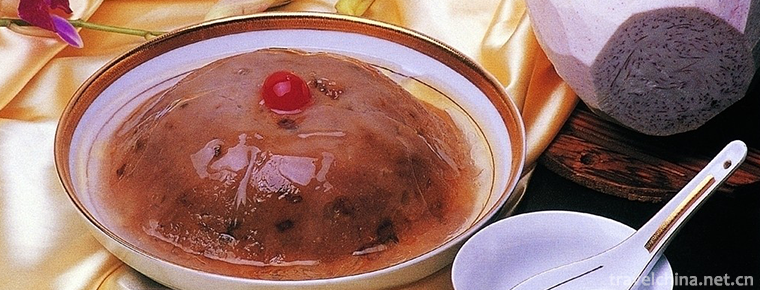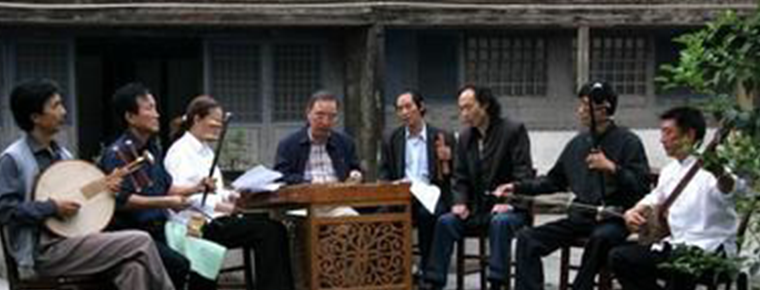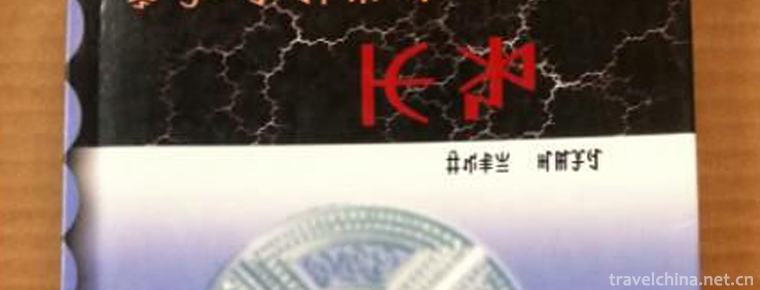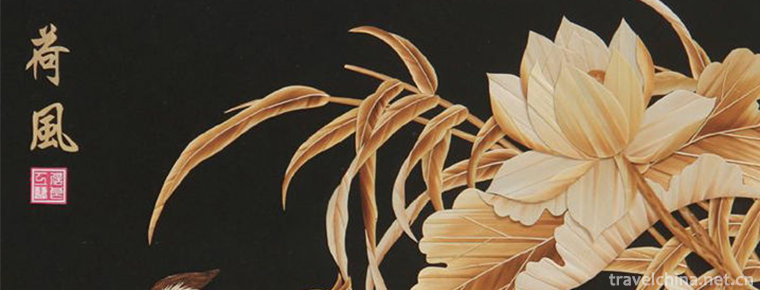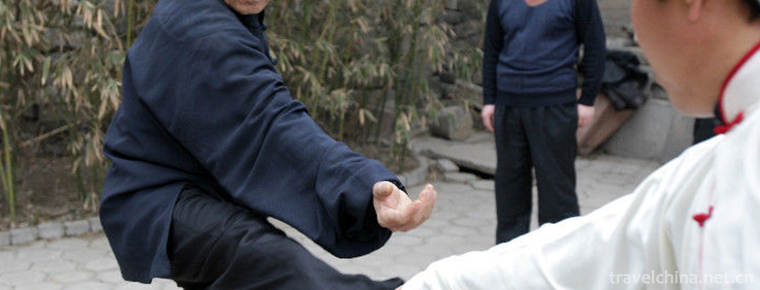Wangjianglou Park
Wangjianglou Park
Wangjianglou park is located in the South Bank of Jinjiang River, Jiuyanqiao, dongmenwai, Chengdu, Sichuan Province. It covers an area of 188 mu. It has willow stone fence, wave light building shadow, green bamboo path, pavilions and pavilions. The main buildings are Chongli Pavilion, Zhuojin tower, HuanJian Pavilion, Wuyun immortal Pavilion, liubeichi and spring Pavilion.
Wangjianglou Park was built in the Ming and Qing Dynasties in memory of Xue Tao, a poetess of Tang Dynasty. It was established as Wangjianglou Park in the Republic of China and is now a national key cultural relics protection unit.
Wangjiang tower
The most magnificent building in Wangjianglou park is the 39 meter high Wangjiang tower, also known as Chongli Pavilion. The ridges and sparrows on each floor are decorated with exquisite clay sculptures of animals and figures. The top of the pavilion is gilded with gold. Under the beautiful sun, it is glittering and dazzling. Ingenious design, cornice angle, Diao Liang Huadong, magnificent. When you climb the tower, you can have a panoramic view of the spring scenery of Jinjiang River. In addition, there are two buildings, one on each side, and the other on the other. One Pavilion and two floors and the adjacent Wuyun immortal Pavilion constitute a garden building group with rich Sichuan style.
Zhuojin building
Zhuojin tower, located on the west side of Chongli Pavilion, has two floors and three rooms, which is slightly like a boat. In the Han Dynasty, Chengdu brocade households often washed the brocade woven in Jinjiang, so Jinjiang was also known as zhuojinjiang, hence the name of Zhuojin tower. The building is in the shape of a boat, which is said to commemorate Xue Tao's farewell to his close friend Yuan Zhen.
Poetry reciting tower
Located in the east of Chongli Pavilion, the chanting tower is built on the basis of that of bijifang where Xue Tao lived in his later years. It is open on all sides and depends on each other in three layers. The loquat Gate Lane in the southwest of the reciting tower was built according to the meaning of "close the door in the loquat flower" in the poem presented by the poet Wang Jian to Xue Tao. Passing through the pipa Gate Lane, there are five cloud immortal hall, spring Pavilion, Qingyuan room and HuanJian Pavilion. One Pavilion and two floors and the adjacent Wuyun immortal Pavilion constitute a garden building group with rich Sichuan style.
Characteristics of the park
The open area of Wangjianglou park is a garden landscape area mainly composed of bamboo, which is the special park with the most bamboo varieties in China. Xue Tao loved bamboo all his life and praised bamboo for its "self-reliance with an open mind" and "cangcangjin Jieqi". In memory of Xue Tao, descendants planted all kinds of excellent bamboos in the garden, bringing together more than 200 kinds of bamboos at home and abroad, including some rare and precious ones. The bamboo in the park has thousands of postures and each has its own unique charm. People regard the garden with its bamboo grove like sea and endless interest as "Bamboo Park".
In the northeast of the park, there is a Yujin bridge leading to the other side of Jinjiang River, which forms a transitional landscape with Feiyun waterfall and moon watching platform. Every time the moon rises, you can enjoy the moon shadow in the wave on the moon watching platform, so the river bank under the platform is engraved with the words "Jin Bo Li Zhi". In the east of Qiaodong, there is a temple style building named "Jinjiang chunse", which was demolished from the former wusheng palace. It belongs to the Qing Dynasty building and is named after Du Fu's name "Jinjiang spring scenery comes to heaven and earth".
There is an entertainment service area along the river, including tea house, bijiyuan fishing area, restaurant, children's paradise, etc. Mingluolou is the main tea house in the garden. It is named after he Shaoji's famous saying "flowers and rafts are fragrant for thousands of years". It is extremely sweet to make tea with Xue Tao's well water. In his later years, Xue Tao lived in bijifang, the northwest corner of the city. Today, Biji garden is named after it.
Park status
Wangjianglou Park spent more than 3 million yuan to complete the greening transformation of more than 30000 square meters, among which HuanJian river is one of the transformation tasks. The 300 meter HuanJian River starts from the bonsai garden in the west, passes through the bamboo forest, Biji garden, central amusement park, and ends at the entrance of Qingyi Lake in the south. Formerly known as "Longxugou" by the public, it is very beautiful after transformation.
According to the goal of building Chengdu into a "world modern garden city", many municipal parks in Chengdu are undergoing landscape transformation, and many of them have been standardized or even reduced.
Historical evolution
Xue Tao, with the word Hongdu, was born in Chang'an (now Xi'an, Shaanxi Province). He lived in Sichuan with his father. He was intelligent and eager to learn from his childhood. After his father's death, he became a musician at the age of 15 because of his poor family. She was good at poetry and prose, and was proficient in rhythm. She was appreciated by Wei Gao, the governor of Xichuan at that time. She was able to enter and leave the government. She once worked as a schoolgirl, and was called a girl's school book. According to records, Xue Tao has 500 poems, and her contemporaries such as Yuan Zhen, Bai Juyi, Ling Hu Chu, Pei Du, Du Mu, Liu Yuxi, Zhang Ji, and so on, highly praised her, and wrote poems in harmony with each other. Unfortunately, most of these poems have been lost, and only more than 90 poems have been handed down.
Most of the ground of the park is covered with bamboo forest. Because Xue Tao loved bamboo all his life, he often encouraged himself with the virtue of "green, vigorous, strange, open-minded and self-sustaining". Later generations planted all kinds of excellent bamboo in the park, and thus became a famous bamboo gathering place in China, also known as "Bamboo Park" or "Jincheng bamboo garden". There are more than 150 kinds of bamboos in the park, including not only famous bamboos from Sichuan, but also rare bamboos from southern provinces of China, Japan and Southeast Asia. The main varieties are renmian bamboo, Buddha belly bamboo, square bamboo, chicken feet bamboo, purple bamboo, Mianzhu, huqin bamboo, wheat bamboo, solid bamboo and so on.
In the garden, there is also Xue Tao well, which is said to be used for drawing water and making paper for Xue Tao. Beside the well, there are steles with the words "Xue Tao well", which is the handwriting of Ying Xiong, the magistrate of Chengdu in the Qing Dynasty. In his later years, Xue Tao made a kind of crimson small paper in bijifang, where he lived. Its color was gorgeous and exquisite. It was called "Xue Tao paper" in the world. It was imitated in many dynasties. In fact, this well was copied by the king of Shu in Ming Dynasty.
Ticket information
Cultural relics protection: 20 yuan, open garden area: free.
Opening Hours
Cultural relics area: 8:00-18:00, open area: 6:00-21:00.
Best season
All seasons
Suggest to play
2 hours
Geographical transportation
Bus route: Wangjianglou Park Station
Chengdu No.19 Road
Chengdu No.35 Road
Chengdu 335 Road

-
Guilin Yaoshan Scenic Area
Yaoshan is located in the eastern suburb of Guilin City, 8 kilometers away from the city center. The main peak is 909.3 meters above sea level and 760 meters above sea level. It is the highest peak in.
Views: 150 Time 2019-01-13 -
Yellow River Estuary Ecotourism Area
The Yellow River Estuary Ecotourism Area is located in the Yellow River estuary area of Dongying City, Shandong Province. It has unique ecotourism resources of the Yellow River Delta.
Views: 151 Time 2019-01-18 -
Narati Scenic Spot
Narati Tourist Scenic Area, located in Xinyuan County, Xinjiang, is located in the hinterland of Tianshan Mountains, the eastern end of the Ili Valley, with a total planning area of 960 square kilomet.
Views: 48 Time 2019-02-07 -
Poyang Lake National Nature Reserve
Jiangxi Poyang Lake National Nature Reserve is located in the north of Jiangxi Province. It is a nature reserve for wildlife protection. The main protected objects are rare migratory .
Views: 181 Time 2019-02-07 -
Xijiashan Folk House
Xijiashan Residence, a national key cultural relic protection unit and national AAAA-level tourist attraction, is located in Xijiashan Town, Jiang'an County, Yibin City, Sichuan Province.
Views: 491 Time 2019-02-25 -
Eight treasures taro
Babao taro paste is one of the local traditional sweet spots in Fujian cuisine. This dish is delicate, soft, sweet and delicious. It looks like a cold dish but burns its mouth. It has a unique flavor..
Views: 113 Time 2019-03-27 -
Enshi dulcimer
Enshi Yangqin, also known as Enshi Silk String, was made up of Hunan Opera, Southern Opera, Chu Tune, folk minor, instrumental music licensing scholars and .
Views: 109 Time 2019-04-28 -
Mamuteyi Ma mu te yi
Mamuteyi, translated into Chinese as Education Classic, is the product of the slavery society of the Yi people in Liangshan. In the Yi language, "Ma" means education, instruction and persuas.
Views: 122 Time 2019-05-16 -
Wheat straw cut and paste
Straw clipping is a traditional folk handicraft. Also known as "wheat straw clipping", "wheat straw clipping". Using the natural luster of wheat straw and the characteristics of ru.
Views: 220 Time 2019-05-16 -
Running curtain
Running curtain originated in the Spring and Autumn Period and Warring States Period, formed in the Qin and Han Dynasties, flourished in the Song, Yuan, Ming, Qing Dynasty and the early Republic of Ch.
Views: 332 Time 2019-06-09 -
Elbow pounding
This is a rather mysterious school, which originated from a famous family in Linqing, and is closely related to the chivalrous spirit inherent in the Chinese people; it is a fierce school, but it has .
Views: 417 Time 2019-08-10 -
The social background of Cheongsam
Many scholars and media at that time believed that it was an important reason that women imitated men to wear long gowns in order to seek independence of mind and emancipation of women's rights in the early Republic of China..
Views: 316 Time 2020-12-11
